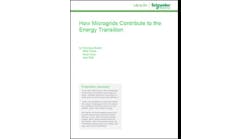Duke Energy Florida has plans to re-make its grid into a two-way grid that incorporates renewable energy, storage, electric vehicle charging stations and smart meters and boosts resiliency.
The plan is a blueprint for re-making a dated grid into a more fashionable system that’s bidirectional, flexible, protects itself against power outages and eventually will take advantage of distributed energy resources (DER) to improve resiliency.
The result of a settlement agreement with a number of environmental, consumer and other groups, the plan calls for Duke to drop its Levy Nuclear Project, acquire 50 MW of storage, install 500 EV charging stations, add 700 MW of solar power and modernize its grid. State regulators must approve the plan.
Key to the proposal is an effort to create a $400 million “self-optimizing grid,” that will ultimately help the company better incorporate rooftop solar and other distributed energy, said Jay Oliver, Duke’s general manager of grid solutions engineering and technology.
The program will add automation and intelligence that will allow the company to manage the grid remotely, which is expected to improve reliability. This will allow the company to identify and isolate problem areas, then re-route power, which can shorten or eliminate outages, the company said. About 80 percent of Florida customers will be connected to the self-optimizing grid when the project is complete.
The grid will be more segmented, with more control points and sensing points, along with automated switching gear that can re-direct the flow of energy during outages, explained Oliver.
“This gives us a lot of intelligence about the types of DER and the effects of them,” he explained. “We can sense voltage and current.”
The self-optimizing program will allow the company to move from a one-way power flow model to one that will enable two-way power flow, he added. “When there’s a power outage, for example, on the main circuit line, the goal is to automatically re-route power.”
No private power yet
He noted that initially, the company would not rely on distributed energy from private sources to help during outages. In Florida, that’s generally power from rooftop solar, he noted.
“We’re not yet using the private power. That could be an option in the future. But what we’re putting in will allow us to do that, with two-way power flow,” he said. “It is possible that one day, when there is enough distributed energy on the system, we could leverage it to help during system outages,” he said.
The main challenge of integrating distributed resources is coping with intermittency issues, said Oliver. On a cloudy day, the amount of solar available increases and decreases.
“We’ve gotten better at predicting what it will look like, helping us manage the larger utility-scale solar we have across our systems. But with residential, it’s more challenging. We don’t have the sensing available that we do on the larger utility-scale solar. However, one thing the self-optimizing grid will bring to us. is more sensing capability,” he said.
[clickToTweet tweet=”#Duke Energy Florida Aims for Two-Way Grid of the Future” quote=”Duke Energy Florida Aims for Two-Way Grid of the Future”]
Another challenge is voltage increases due to distributed resources.
“If we have multiple privately owned sources on a line segment, it could cause the voltage to rise,” he said. That might happen in a small neighborhood if suddenly all the solar comes on the system.
“The self-optimizing grid won’t solve that problem right away, but it will help us manage it,” Oliver said.
Also part of the grid modernization is the addition of the 500 EV charging stations, he said. The company is in the midst of deciding where to locate the stations, said Oliver.
Duke will add 50 MW of energy storage under a pilot program. The utility will add various sizes of energy storage at yet-to-be-determined locations, said a company spokeswoman.
“Each site will have advanced controls to increase power quality, electric reliability, and support the safety of the power grid,” she said. The company will most likely use lithium-ion batteries, she said.
Introducing time-of-use rates
The company will also add additional smart meters and plans to introduce time-of-use rates that motivate customers to embrace energy efficiency and invest in solar power, said the Southern Alliance for Clean Energy in a press release. The organization will be able to enforce many of the provisions of the agreement, it said.
In addition, Duke Florida plans to invest $1 billion in 700 MW of utility-scale solar, either building plants or acquiring the power.
As part of the agreement, Duke Energy Florida will not pursue the proposed Levy County nuclear project and won’t charge customers for the $150 million it has invested to date.
Parent company Duke Energy is helping lead the utility industry into the hip age of distributed energy through a partnership with 25 utilities, vendors, research labs and government agencies under which the group is developing a standards-based system that aims to reduce the complexity and integration costs associated with integrating distributed energy.
Duke is also involved in a number of innovative microgrids, including the Mount Sterling solar microgrid, which will allow the company to take down miles of wire and poles running through a remote mountain region in North Carolina’s Great Smoky Mountains National Park.
In addition, Duke’s two advanced microgrids in Montgomery County, Md. are designed to provide reliable and efficient energy without straining the county’s budget. And its microgrid at the Boston One Campus in Boston aims to avoid costly power outages.
Learn more about the two-way grid of the future. Join our LinkedIn group, Distributed Energy Resources.







